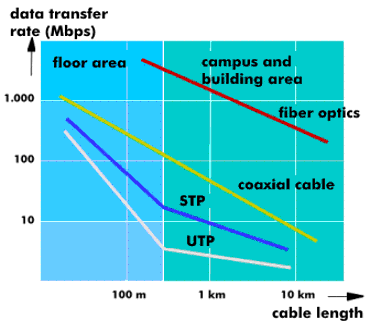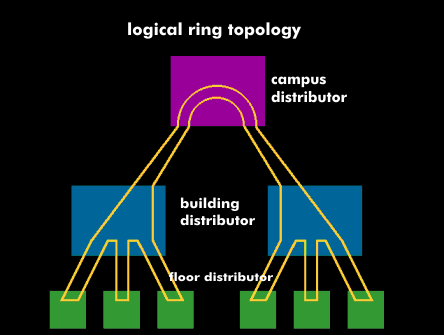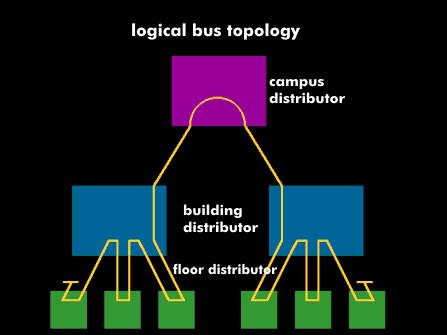structured cabling system (SCS)
Structured cabling is standardized in the EN 50173, ISO11801 and Telecommunications Industry Association( TIA) 568-A standards. They form the basis for a future-oriented, application-independent and economical network infrastructure. Previous, unstructured cabling systems, which were geared to current needs and services, generally resulted in cost explosions, combined with bad investments. In the past, the network operator did not have to deal with detailed questions about the transmission medium, the transmission characteristics or the communication paths, because the local area networks( LAN) were based on a fixed network structure with a corresponding access method and were tied to a fixed transmission medium.
Classic examples of older cabling structures are Ethernet on Yellow Cable, Token Ring on IBM cable or terminal networks and broadband transmissions. LAN adaptations such as Gigabit Ethernet on TP cable and new cabling concepts enable the creation of generally applicable cable structures.
Cabling infrastructures must include installation reserves that also take into account communication requirements for the next 10 to 15 years. Another important aspect of structured cabling is the service neutrality of the connection point. The approach should include all LAN concepts, but also services from the wide area such as voice services via ISDN, video and data transmissions. Furthermore, when building a new network infrastructure, a high degree of flexibility should be taken into account so that the network can be easily converted to future LAN technologies and so that existing and new products can be included in the network.
Structuring of services
In addition, a new network system should be based on standards and thus be manufacturer-independent, have sufficient reserves for possible new services, be insensitive to interference, and ensure secure transmission while taking redundancy links into account. For the user, of course, the investment costs and investment protection are of particular importance, as are the ongoing follow-up costs in the form of maintenance and service expenses.
When designing a structured cabling system, user-specific aspects must also be taken into account and incorporated into the concept
Based on these and a large number of other aspects relating to transmission and transmission media, cabling standards have been developed by various standardization bodies. These standards are mutually adaptable or complementary and should be used as a basis for the development of a structured cabling system.
The structuring takes place within hierarchy levels. In these levels, groups are formed that belong together topologically or administratively. They are divided into horizontal and vertical cabling areas, to which the terrain cabling, the building c abling with the riser area, the floor cabling and the workplace c abling can be assigned.
Structuring of the levels
For premises, building and floor cabling, maximum allowable cable lengths are specified for structured cabling( EIA/TIA 568, IS 11801), as well as recommendations for the topology.
Most cabling areas have a star structure. The physical star structure is of particular interest because all logical topologies can be mapped onto it: The ring topology as well as the bus or tree topology.
The cabling standards are optimized for a geographical extension of 3,000 m, an office area of 1 million sqm and for 50 to 50,000 users. In primary cabling, the standard assumes 62.5/125 µm optical fibers with a maximum length of 1,500 meters.
In secondary cabling, i.e. in building cabling, 62.5/125 µm optical fiber is also used. The length restriction is 500 m. In the floor cabling, which extends from the floor distributor to the junction box, the standard specifies TP cables (100 OhmUTP, 120 Ohm UTP, 150 Ohm STP, 62.5/125 µm fiber optic) with a length of 90 m, plus 10 m of connecting cable.




